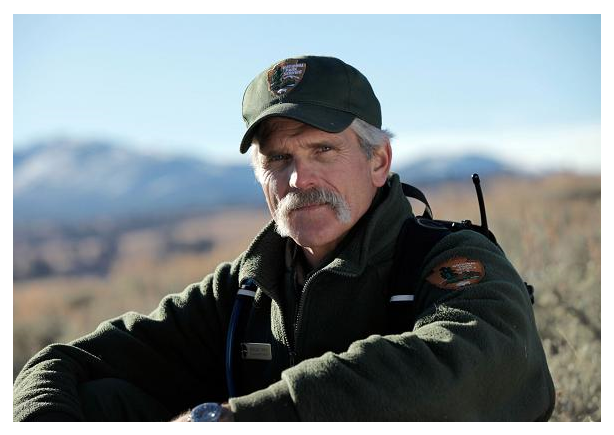
Wolves are a lightning rod in the West.
Want to start an argument in Cheyenne, Boise, or Bozeman? Just start talking about wolves. Many locals demonize wolves as bloodthirsty murderers that will eat your pets and kill your children unless you’re careful.
Many others romanticize wolves as the noble spirit of nature’s majestic beauty (or the beautiful spirit of nature’s noble majesty, or the spiritual nature of…)
One more battleground in America’s social wars, it’s a classic redneck vs. hippie squabble, ranking up there with socialized medicine and the confederate flag. Wolves stir passion and prejudice based on heritage, politics, and of course economics.
Rising above the fray is biologist Doug Smith, the man who brought wolves back to Yellowstone. Beginning in 1995, Smith and his team captured 31 gray wolves from a variety of packs in Canada and set them loose inside the park. As project leader, Smith has studied the wolves for 20 years as their numbers increased. The most recent estimates put the wolf population above 100 inside the park. More controversial are the hundreds of wolves that dispersed outside the park boundaries. Once extirpated from the American West, wolves are now roaming widely across Wyoming, Montana, Idaho, Colorado, Washington, and Oregon.
With wolf populations on the rise, much of Smith’s job these days entails educating the public about the value of top predators to a balanced ecosystem. It’s easy enough when speaking to throngs of Yellowstone tourists eager to glimpse a wolf or a bear during their visit. But it’s infinitely more difficult swaying the passions of local ranchers who lose livestock to wolf predation and hunters who see wolves as wanton killers of coveted game animals, most notably elk.
In a crowd of extremists, Smith is a voice of reason. More focused on facts than feelings, he is always ready to communicate honestly about wolves — the good, the bad, and the deadly. Are wolves critical to a balanced ecosystem? Absolutely. Are they a major inconvenience? You bet. Do they attack people? Almost never. Do they kill sheep and cattle? Occasionally.
Smith readily admits wolves are hard to live with but takes the time to explain why it’s worth the trouble. Avoiding value judgments and speaking in the dispassionate vocabulary of a scientist, he is the rarest of advocates – one who considers both sides of the issue without questioning the motives of the opposition.
If you’re interested in learning about wolves, there’s nobody better.
Wolves On the Hunt by Douglas W. Smith, L. David Mech, and Daniel R. MacNulty
Decade of the Wolf by Douglas W. Smith and Gary Ferguson.